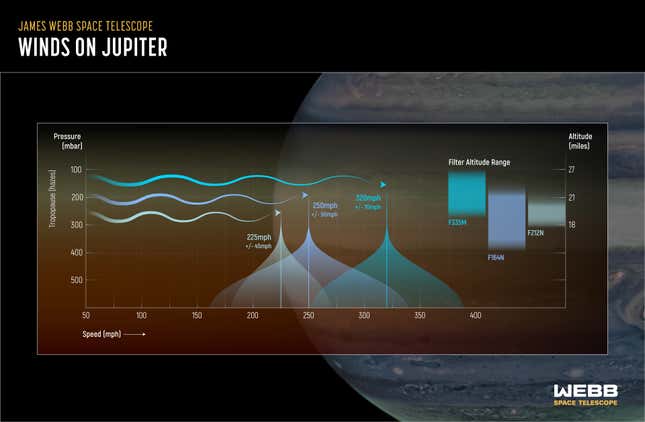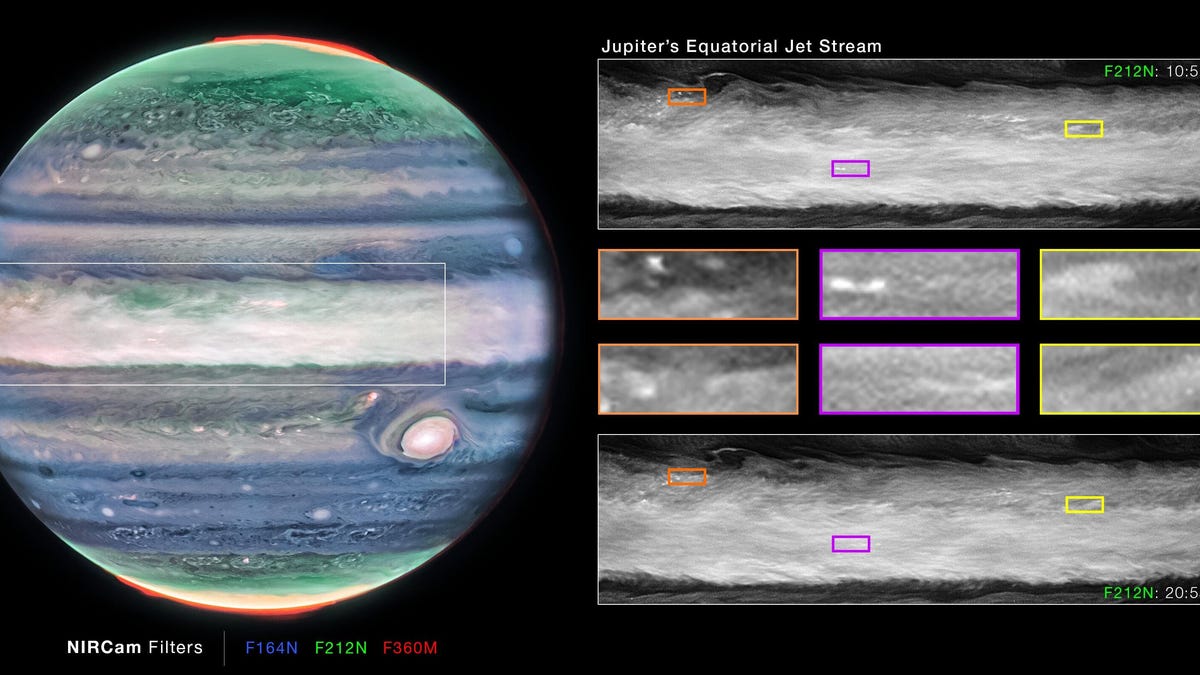In July 2022, the Webb Space Telescope made a fascinating discovery – an intense jet shooting across the equator of Jupiter, the largest planet in our solar system. This jet is traveling at approximately 320 miles per hour (515 kilometers per hour) and is situated at an altitude of about 25 miles (40 km) in Jupiter’s lower stratosphere.
Astronomers were aware of east-west jets in Jupiter’s atmosphere, but the discovery of this fast-moving jet suggests that the planet’s internal dynamics may be more dynamic than previously thought. The team’s detailed research on the jet can be found here in the journal Nature Astronomy.
Launched from French Guiana in December 2021, the Webb Space Telescope has been conducting scientific observations of the universe since July 2022, after a months-long commissioning process. You can view some of the most mesmerizing and insightful images captured by Webb since its scientific campaign began here.
Webb’s remarkable infrared vision enables it to detect ancient light from billions of years ago, tracing the evolution of the cosmos. However, this does not mean it neglects our neighboring planets in the solar system. In fact, Webb has imaged the luminous aurorae on Jupiter’s poles in August 2022 and has also captured stunning visuals of the rings encircling Uranus and Saturn.
The recent images of Jupiter, revealing the jet stream, were taken using Webb’s Near-Infrared Camera. These images show disturbances in Jupiter’s atmosphere caused by the motion of the jet. Visible wind shears in the images helped track the jet, indicating changes in wind speeds at different heights and distances within the planet’s atmosphere. The NIRCam image includes specific regions of Jupiter’s equatorial zone with features influenced by the jet.

According to the researchers, the presence of the jet near Jupiter’s tropopause – the region on the edge of its troposphere – suggests that the atmospheric circulation around Jupiter’s equator is similar to that of Saturn, which was previously unknown.
While Webb can only provide insights into Jupiter’s physics from a distance, upcoming missions will offer a closer look at the planet


